Picture hundreds of thousands of turtles coming ashore to lay their eggs on a stretch of beach maybe only a few miles long. Over 2-3 days each Olive Ridley turtle will lay around 110 eggs in each nest, so we’re talking over 10 million eggs. To put that into perspective that’s nearly 500,000 kg of turtle eggs!
This natural phenomenon is called an Arribada, which is Spanish for arrival, and takes place on only a few beaches in the world. Because humankind has a habit of fucking things up this beautiful animal has disappeared from many of the beaches in the world. The turtle eggs are considered an aphrodisiac delicacy and their black market trade is destroying the species. Two areas that are still fighting to protect the Olive Ridley are Nancite and Ostional in Costa Rica, but with such a huge culture of egg poaching it’s a complicated fight. Keep reading to find out about protecting a phenomenon – Olive Ridley sea turtle conservation in Costa Rica.
I’ve always been fascinated by sea turtles. It’s something to do with their graceful gliding through the sea and their curiosity of humans. They have an endearing naivety of not understanding the dangers of the world (something which definitely isn’t helping their decline). Out of all the turtle species the Olive Ridley is definitely the most fascinating because there are so many unanswered questions.
We don’t know how freshly hatched Olive Ridleys know to go towards the sea. We don’t know how they can travel all of the world’s oceans and still return to the same small beach to nest. And, we still haven’t got a clue what they do through their juvenile years. Hatchling Olive Ridleys are almost impossible to track, they enter the ocean as small as a golf ball and return to coastal waters 10 years later fully grown and weighing up to 50 kg.

But, It’s their nesting habits that will really blow your mind. An Arribada is a phenomenon that’s difficult to comprehend without seeing first hand. With so many of these incredible animals nesting at the same time thousands are literally clambering over each other to find a nesting spot. Imagine a huge country with only one hospital and all of the women giving birth in one room. It’s graphic but that’s literally what goes down. The beach gets so filled with nests that after the first wave of turtles the next wave is simply digging up the old ones. If the conditions are just right (and they’ve not been dug up) roughly 50 days later hundreds of tiny turtles will emerge from the sand and make their way into the sea – it’s a beautiful sight!
It’s a dangerous world for an Olive Ridley
100 years ago the Olive Ridley turtle was in such a huge abundance tropical coastlines were literally filled with them. Arribada beaches were all over the world and the turtles were really really happy. Unfortunately times have changed. Human impacts are causing havoc in all corners of the world and the Olive Ridley has been seriously affected by habitat loss, climate change and fishery bycatch. Plastic pollution is plaguing the seas and there has been a huge rise in turtles and marine species killed by plastics in the water.
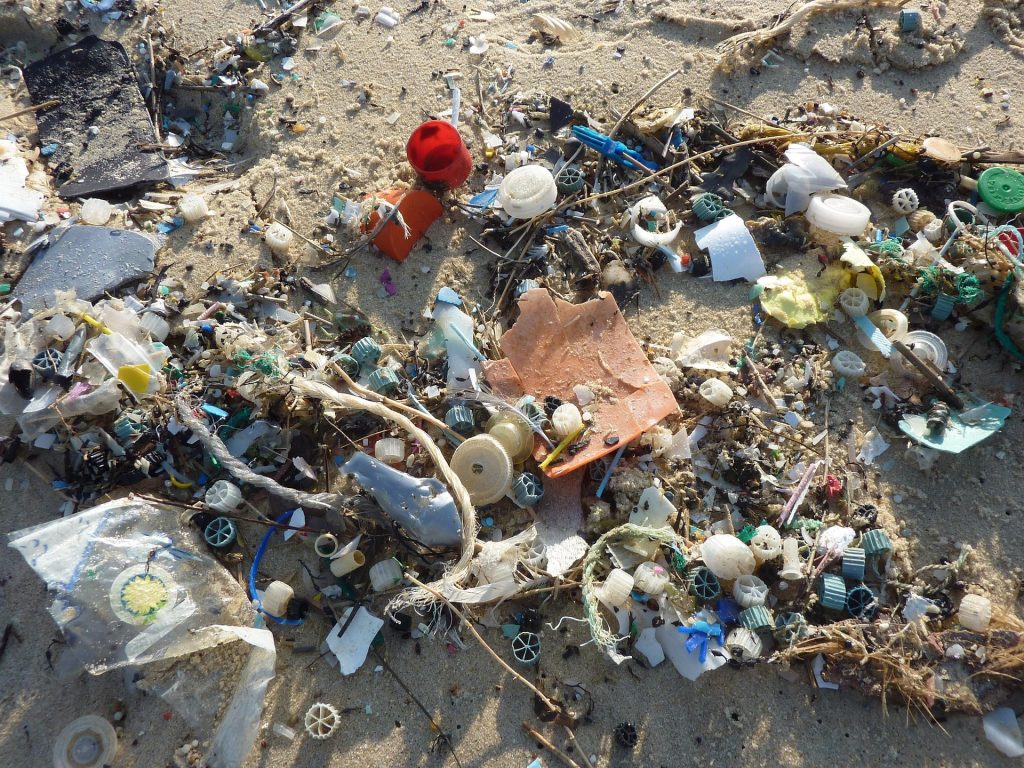
As you may have guessed it though it’s the direct human impact that is the biggest problem. Olive Ridley eggs are thought to be an aphrodisiac and considered a prize delicacy across the globe. The meat is eaten, used for medicine and their shells are sold for souvenirs and jewellery. Arribadas are pretty bloody obvious, with thousands of turtles on the beach, so it’s almost impossible to keep this secret from the turtle poachers. This has led to a huge culture of egg and turtle harvesting and many coastal communities are dependent on their black market sales.
This is no new news. Traditionally sailors used to catch these curious creatures for food, keeping them alive on their backs to stay fresh. It wasn’t until the last hundred years that this terrible act really escalated. As the demand for turtle eggs soared industrial level egg harvesting rocketed in tropical nesting regions. Huge numbers of turtles would congregate offshore waiting for a chance to mate or to approach the beach. Turtle hunters would not only steal the eggs and nesting turtles on the beach but also catch them from the water. Bunch of wa*kers.
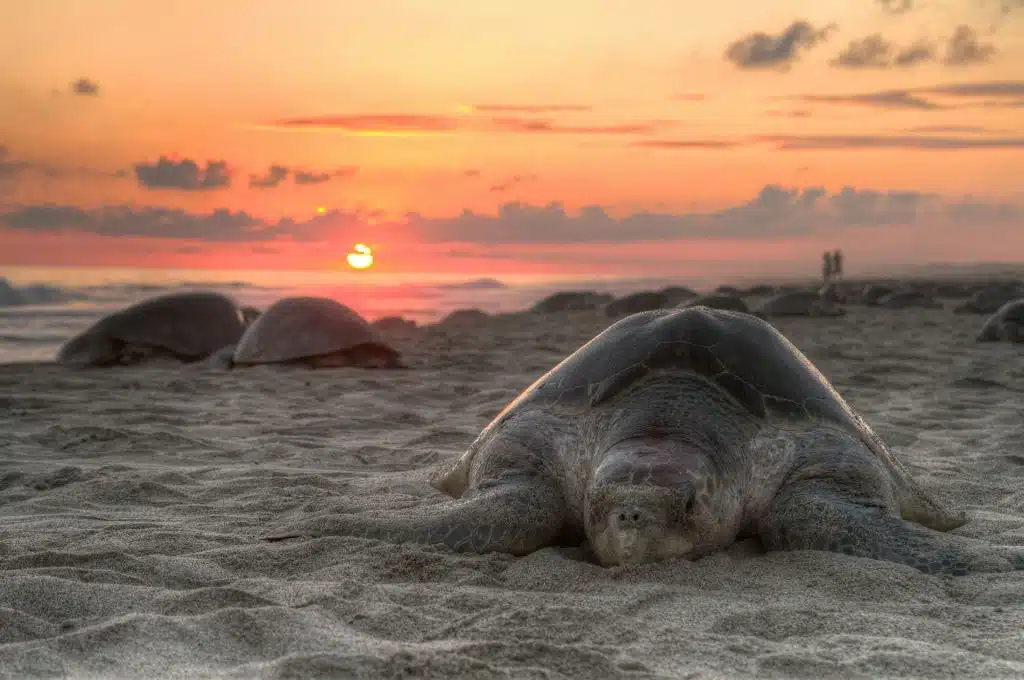
After decades of this systematic slaughter turtle populations began to suffer and many nesting sites around the world have completely disappeared. The massive Arribadas that used to take place in Suriname, the Andaman Islands and Thailand are now nowhere to be seen. In Bangladesh, Myanmar, Malaysia, Pakistan and Sri Lanka the Olive Ridley has been hunted so intensely they are now an increasingly rare sight.
In Latin America the horrible impact is the most obvious. In Mexico more than 2 million Olive Ridleys were slaughtered in the space of 5 years and nearly 150,000 each year in Ecuador. Coastal communities became so reliant on the illegal turtle trade that in Mexico almost all nested turtle eggs were stolen from the beaches. This had a dramatic impact on the species and Mexico lost nearly 20 nesting sites with only 1 Arribada beach remaining.
Corcovado National Park is also a fantastic place for wildlife spotting, find out more on the link!
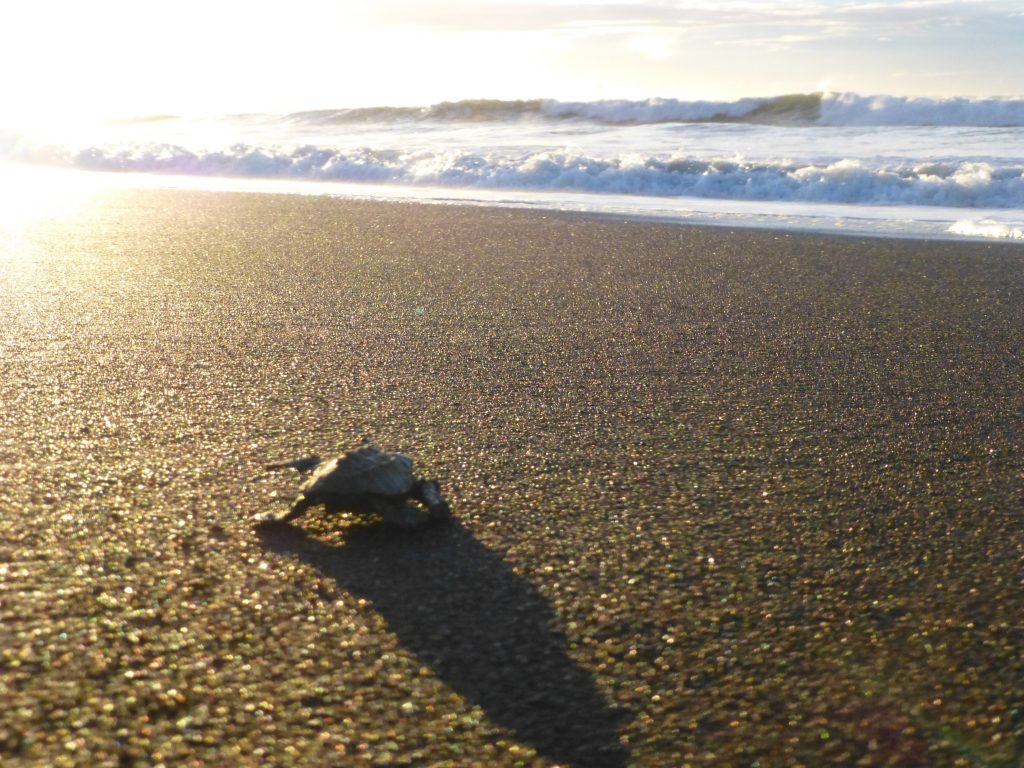
The rise of turtle conservation in Costa Rica
In the last 20 years global communities have realised the shocking truths about the turtle trade and the Olive Ridley is now a protected species…in most countries. One country that has been pioneering the way for Olive Ridley conservation is Costa Rica. Two beaches on it’s East Coast have some of the highest numbers of nesting Olive Ridleys in the world. The beaches of Ostional and Nancite are constantly developing turtle conservation and working to protect the Olive Ridley. However they both go about it in very different ways.
I mentioned earlier that during an Arribada there are so many nesting turtles they end up digging up each others nests. Well, this is kind of a big problem. Over the course of 2-3 days hundreds of thousands of nests are being dug in a very small location and unfortunately, this kills the majority of laid eggs. With all of the destroyed eggs in the ground it changes the chemicals in the sand and without getting all technical, this is crap for the turtles. Out of thousands of successfully laid nests the number of baby turtles that will make their way to the water is devastatingly low.

Nancite is a fully protected beach, meaning there is no illegal egg poaching allowed. The turtles are left to lay their eggs and nature is left to do it’s thing. Sounds perfect right? Actually the levels of Olive Ridley have been significantly dropping through the years. Even though it’s still one of the most abundant nesting sites numbers dropped from 138,000 in the 1970s to 8,320 in 2005.
Why is this happening? Well, although there are a lot of other things to take into consideration, it’s highly believed it’s because of turtles destroying nests and changing chemical levels in the sand. Another damaging factor for the Olive Ridley is that once mothers have laid their nests they’re left unprotected and a huge number are dug up by vultures, raccoons and coyotes for food. Once the eggs do hatch the turtles are almost defenceless in the waters and are easily consumed by other predators.
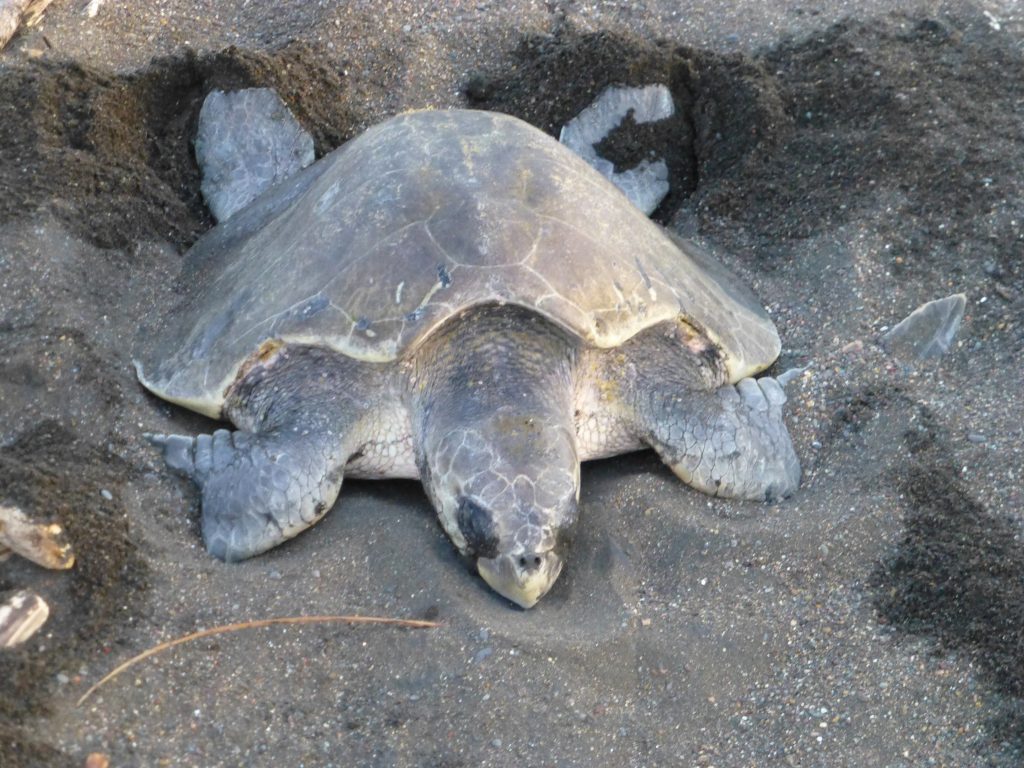
Moving over to Ostional and a very different approach is taken (it’s pretty controversial). Ostional is the only place in Costa Rica where turtle eggs can legally be taken. It’s agreed that the locals of the small town will harvest eggs for the first 2.5 days of the Arribada. After this, locals will actually help to stop other predators on the beach eating the nesting turtles and the hatchlings in the future. Unlike Nancite, Olive Ridley numbers at Ostional have gone from 4,000 in the 1970s to 134,000 in 2005. Whilst it’s not possible to say that this is directly because of the locals taking the eggs, a much higher percentage of turtle eggs hatch successfully…
Facts and figures have been taken from the IUCN, click here to read more

Doesn’t that give the green light to animal trade?
No…well, maybe. That’s a difficult question. Illegal wildlife trade is such a brutal and unnecessary horror in the world it’s hard to ever think that it could be positive for nature. Looking at the Olive Ridley in Costa Rica it’s hard to deny the facts. When thousands of turtles are dying because they’re are too many eggs is it a bad thing to allow the locals to take some? On one hand I think that this just continues a culture and reliance on animal trade. On the other hand I think if it’s benefiting the Olive Ridley then it must be a good thing…what do you think?
What is safe to say is that turtle poaching is a huge problem that is very difficult to deal with. In Costa Rica generations and generations of locals in poor neighbourhoods have become reliant on the turtle trade. If governments outlaw it do you really think they will just stop, I can tell you first hand that this wouldn’t be the case. In Ostional the locals have grown knowledgeable in conservation and are working to protect the Olive Ridley, even if it is just so they can continue to hunt them within regulation. I’m not saying it’s a perfect situation but it has created a culture of understanding and respect between the locals and wildlife. Not everyone is gunna be tree-hugging vegans like us.
Want to experience a turtle conservation project? Consider the Juara Turtle Project in Malaysia
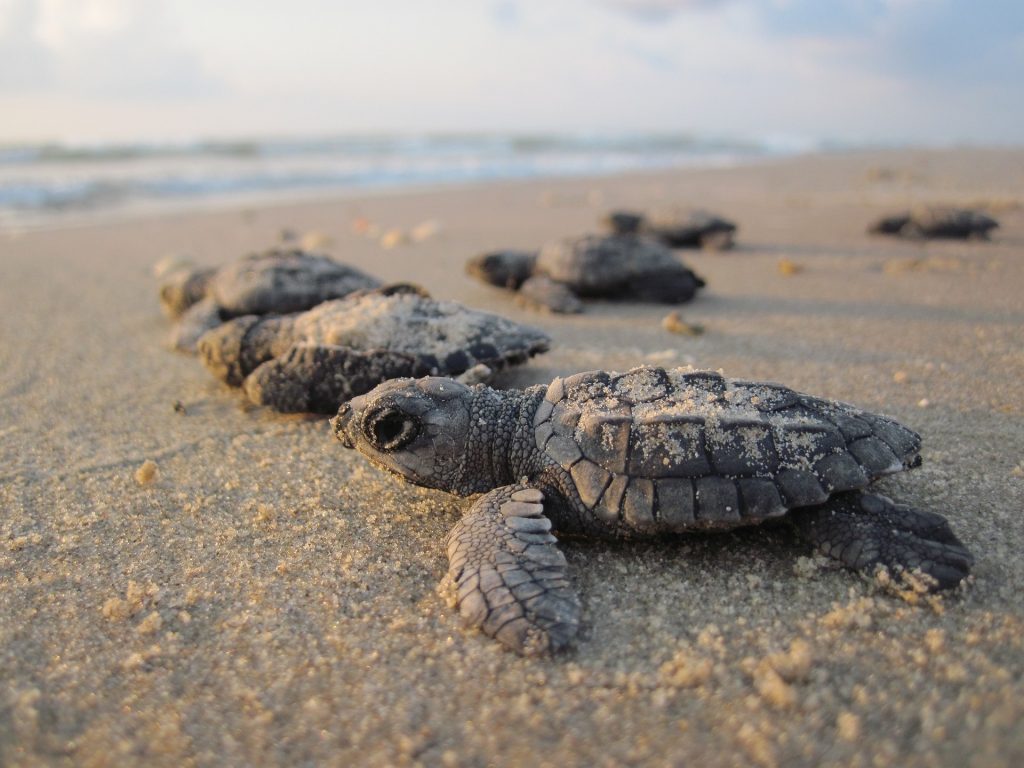
My time in Costa Rica
Whilst researching for my dissertation I was lucky enough to spend a year monitoring the Olive Ridley in Costa Rica. I worked at the Camaronal Wildlife Refuge which is in between Ostional and Nancite. My time was spent spotting the nesting turtles through the night, re-homing the eggs into a turtle hatchery and monitoring conditions. Even though it was on a protected beach we couldn’t stop egg poachers coming to steal the eggs. We didn’t have the staff to patrol all of the beach at all hours and a lot of the time it wasn’t safe to approach the poachers. We also couldn’t stop vultures or raccoons digging up the nests. In the hatchery we could ensure the eggs would be protected and could safely release them into the sea. Over the course of the year I had battles with pesky raccoons every night, chasing them away from the hatchery every 5 minutes. I also witnessed an Arribada and it was life-changing. It gave me such a huge insight into the beauty of the natural world and turbo charged my interest in conservation.
If you’re thinking of volunteering abroad then this is a really useful article
Also I’m going to admit that I have kind of lied in this article. Although it’s a ‘fact’ hatchling Olive Ridleys naturally go towards the sea, this is definitely not the case, or at least not straight away. When hundreds of turtles start hatching from the nest they scurry around in every direction possible. Some towards the sea, some not. When you have a crowd of hungry vultures sitting by it made for a very stressful situation. Although the turtles would eventually find the right route, any delay would make them vulture or raccoon lunch. I would literally sprint along the beaches trying to get the little guys going in the right direction.

The future of turtle conservation in Costa Rica
Whether you agree with the Nancite or the Ostional approach Costa Rica really is a leading nation in turtle conservation. There are now a whole variety of honest and passionate groups protecting not just the Olive Ridley but all of the natural world. As with all environmental and wildlife issues the future is uncertain. The more people that are educated and aware of what’s going on the better. We can support non-profit organisation that are working to protect the species and now with the power of the internet we can pressure or support governments and industries to protect these amazing animals.
Looking for turtle friendly travel tips?
You can also have a hands-on approach. Costa Rica has become a hotbed for turtle eco-tourism and there are plenty of places you can visit nesting beaches and turtle hatcheries. There are volunteer conservation positions available throughout the country but be vigilant. If you do plan to visit nesting sites or would like to volunteer do some research and make sure your money is helping to protect the species not just going into someones back pocket. Make sure that you are benefiting the environment, not just a bunch of happy snapping tourist stomping over nests. Working with turtles is an experience I couldn’t recommend more. In all my years of travelling and wildlife encounters there is nothing like seeing a nest of baby turtles emerging from the sand in the moonlight and disappearing into the sea.
Do you agree with Ostional or Nancite? Have you had any amazing conservation experiences? Tell us in the comments box below!




